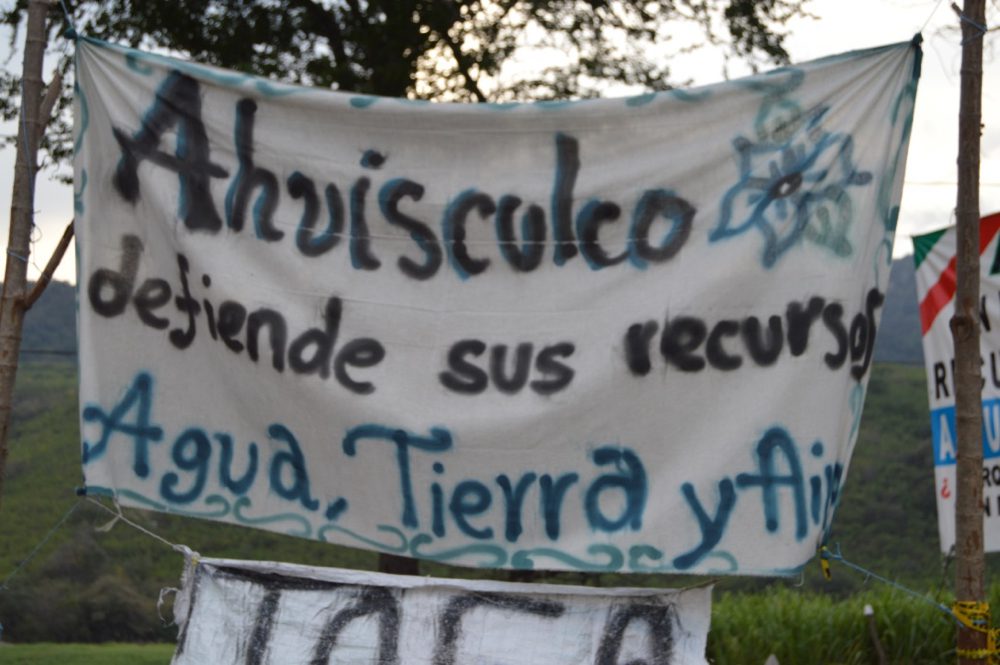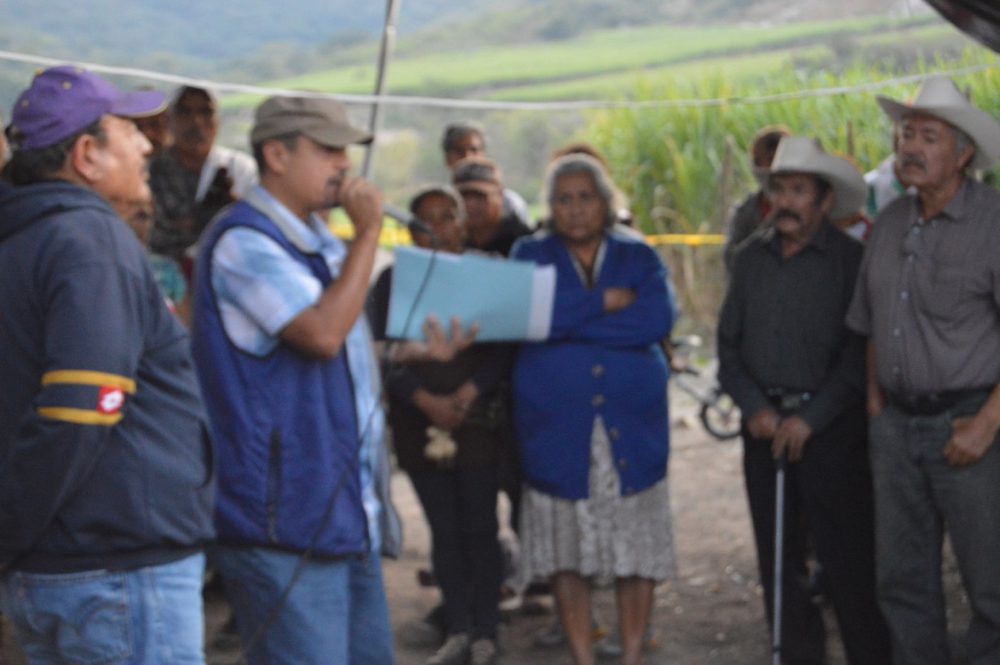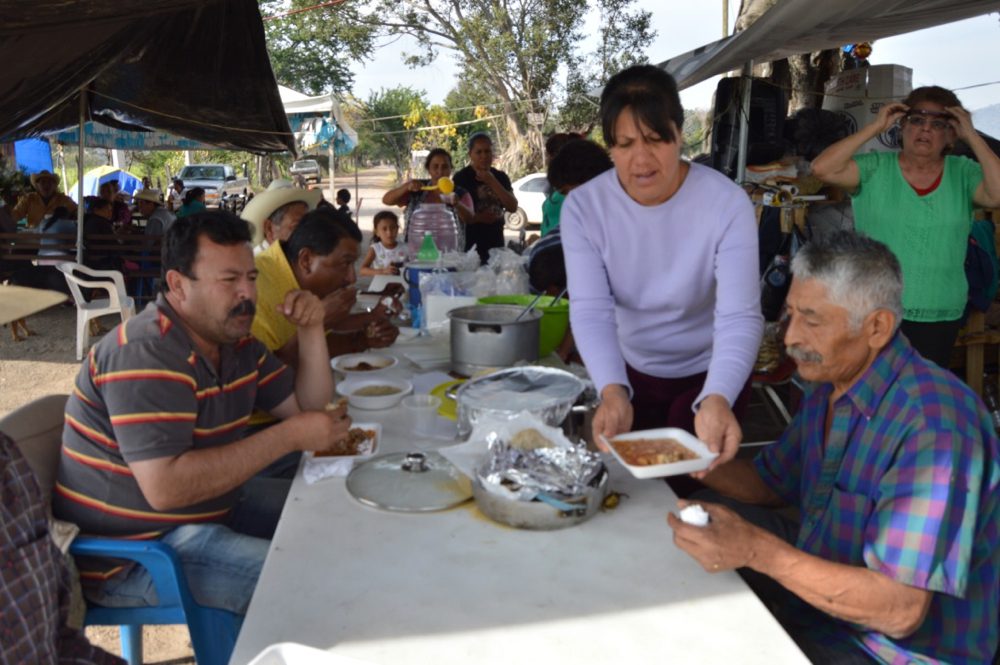Tracy L. Barnett
for El Daily Post
The battle to defend the natural springs of clear water might not only have gotten this Jalisco community to protect its natural resources, it might also have unified the residents like never before.
“It’s been very heartening to see that our people are staying strong and committed despite the fact that these are days when most people want to be home with the family,” said Juan Carlos Montes Medina, a local veterinarian who has been one of the leaders of the Committee in Defense of the Natural Resources of Ahuisculco. Townspeople from the Jalisco village of Ahuisculco have maintained their encampment blocking a construction company from damaging their drinking water source, with reinforcements coming in for the holidays from as far away as California to show their support.
The ad-hoc group formed in September in response to the excavations in the recharge zone of the treasured blue springs that provide their village with natural potable water – a rarity these days in Mexico. Villagers just passed the two-month mark entrenched in a roadside encampment blocking the construction site, complete with a tent chapel housing their precious Virgin of Ahuisculco.

You may also want to read: Jalisco villagers set up camp against the bulldozers
A company associated with the Mexican pharmaceutical giant Pisa began the excavations in September to build massive industrial containers for molasses just upstream from their drinking water supply, and after nearly two months of government inaction, the citizens took it upon themselves in early November to stop the bulldozers by setting up an encampment blocking the construction.
Villagers had some good news to celebrate over the holidays, however; first, a meeting with University of Guadalajara Rector Tonatiuh Bravo Padilla yielded support in the form of a promise to evaluate any environmental impact study on the site, which must be done before a state permit is granted; and second, company representatives expressed interest in the villagers’ proposal to trade the parcel in question with another one out of the danger zone.
Contacted on New Year’s Eve, Montes said the group was preparing to receive another good-sized gathering to see in the New Year together.
“The people are prepared to receive the New Year here, and with their energy at 100 percent to stay here for another two or three years, if necessary,” said Montes.

Montes was optimistic that this will not be necessary; he and Ignacio Partida, another group leader, were approached by company representatives and requested a public hearing to discuss the proposal. But the encounter left them with the hope that their goal of turning the area into a protected nature preserve might soon be a reality.
“We’re all really happy with what seems to be a light at the end of the tunnel,” said Partida who is president of the ejidal government of Ahuisculco. “We hope the situation will be resolved soon, but we are ready to continue the struggle for as long as necessary.”
The parcel is also located in the center of a narrow wildlife corridorthat connects the Primavera Forest, a UNESCO-recognized nature reserve at the western edge of Guadalajara, with the nearby Sierra of Ahuisculco, an even larger biological reserve.
It’s the most important biological corridor left connecting the Primavera with other forests. The goal of the villagers is to have this corridor declared a protected area like the Primavera itself.

New Years’ Eve celebrations began with a rosary and prayer to “La Chaparrita,” as the Virgin of Ahuisculco is fondly known, asking for blessings, guidance and a speedy resolution to the issue so that people will soon be able to return to their homes and their lives.
Piñatas were broken, champagne was uncorked, pozole was served up and the New Year was seen in with good cheer and another all-night watch around the fire.
“We passed the night with chatting and laughing, one more night at the planton, one more night without sleep that was worth the trouble because we’re defending what is ours and what nobody is ever going to contaminate and much less take away,” wrote Salvador Ortiz, an engineering student from Ahuisculco who has practically taken up residence at the encampment during his vacation.

After nearly three months working with the committee to protect the area, Montes believes the whole experience of maintaining the encampment has changed Ahuisculco for the better, regardless of what happens in the long run.
“If there’s something that distinguishes Mexicans, it’s that we’re very disorganized, very apathetic, fighting with our neighbors over small things,” he reflected. “After defending (our water), our way of seeing each other, the way we’ve lived together, things are not going to be the same. If it helps us to be more unified in our village, if it helps us to develop a way that’s respectful of nature, which is what makes life here so wonderful – it will all be to the good. I think we’re going to be able to find a way to live more sustainably with nature and to value more what we have – and maybe to be a little more tolerant with each other.”
Frequent updates on the case can be found on the Facebook pages “Ahuisculco Se Defiende” and “Ahuisculco Notitas.” A petition requesting a judicial review of the case is also being circulated at Change.org.
— Tracy L. Barnett is an independent writer based near Guadalajara in the community of Teopantli Kalpulli, Jalisco, down the road from Ahuisculco. Her web page is www.tracybarnettonline.com




